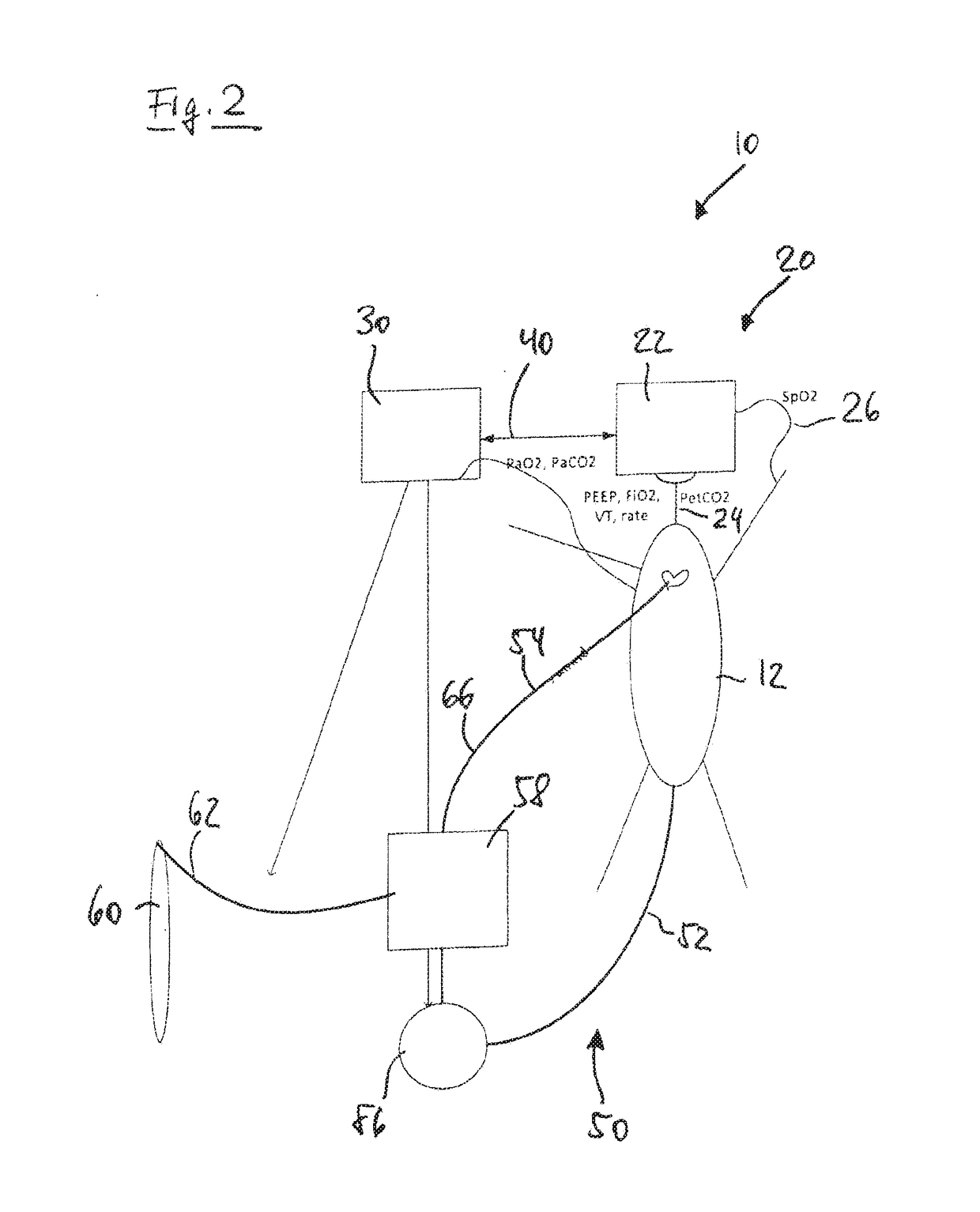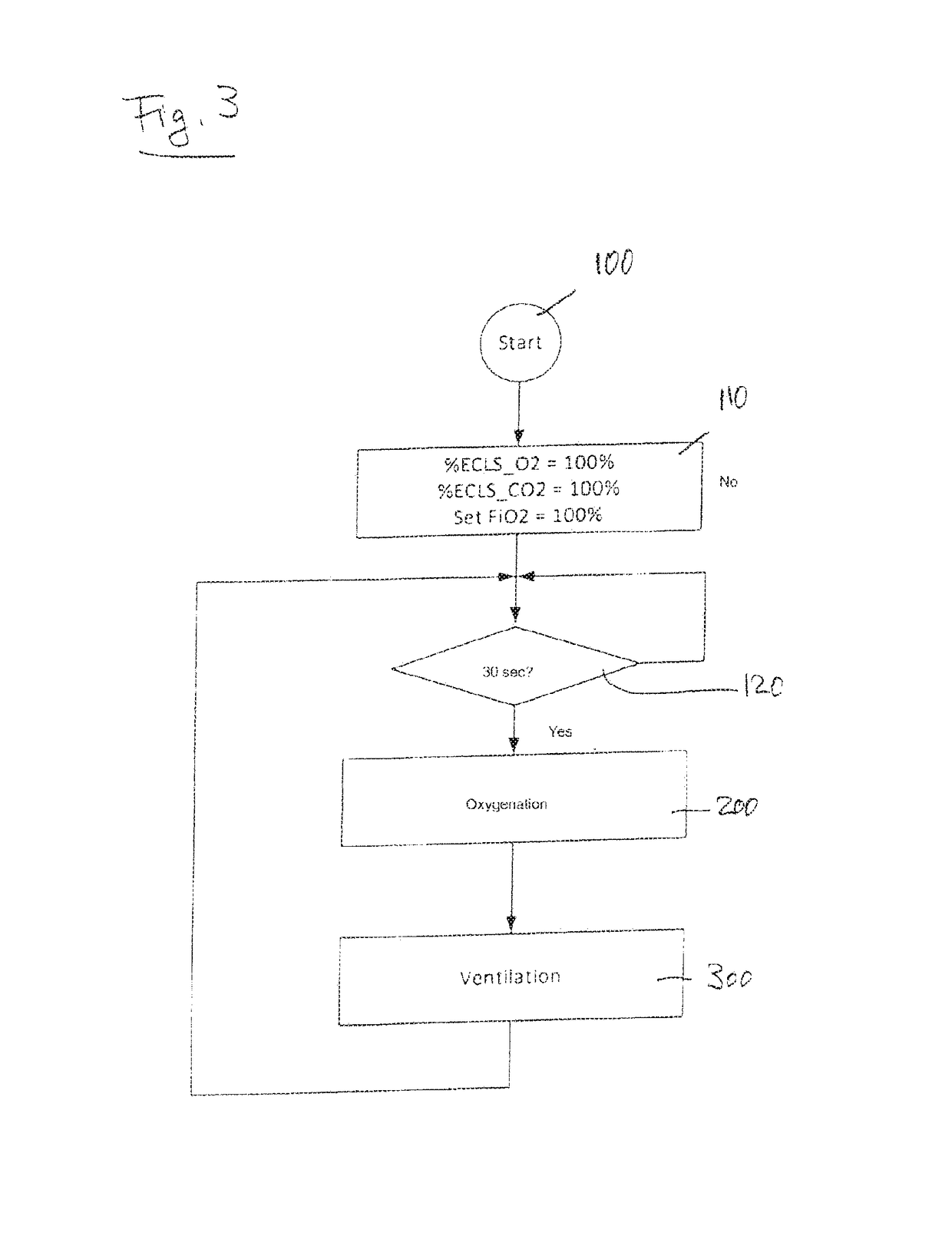Ventilation system with mechanical ventilation and extracorporeal blood gas exchange
a ventilation system and extracorporeal technology, applied in the field of ventilation systems, can solve the problems of inability to fully automate and coordinate the system is hardly suitable for a largely automated, coordinated operation of both systems, and is susceptible to instabilities and complications in the operation, so as to reduce the degree of extracorporeal oxygenation, reduce the flow of blood, and reduce the degree of extracorporeal suppor
- Summary
- Abstract
- Description
- Claims
- Application Information
AI Technical Summary
Benefits of technology
Problems solved by technology
Method used
Image
Examples
Embodiment Construction
[0059]FIG. 1 shows in a schematic and highly simplified view a ventilation system 10 according to the invention, comprising a device 20 for mechanical ventilation designed as positive-pressure ventilation device, and an ECLS device 50. The ventilation device 20 comprises a ventilator 22 shown merely schematically in FIG. 1. The ventilator 22 is connected, via a conduit system 24 not shown in more detail, to the airway of a patient (illustrated schematically in FIG. 1 and designated 12). Via the conduit system 22, the ventilator 22 supplies pressurized air to the airway of the patient 12 during inspiration phases and discharges air from the patient's airway during expiration phases. During ventilation, the conduit system 22 permanently has a positive end-expiratory pressure PEEP applied thereto. Added to this pressure, during the inspiration phases, is an inspiration pressure Pinsp that is also applied by the ventilator (and which as a rule changes during the inspiration cycle). Duri...
PUM
 Login to View More
Login to View More Abstract
Description
Claims
Application Information
 Login to View More
Login to View More - R&D
- Intellectual Property
- Life Sciences
- Materials
- Tech Scout
- Unparalleled Data Quality
- Higher Quality Content
- 60% Fewer Hallucinations
Browse by: Latest US Patents, China's latest patents, Technical Efficacy Thesaurus, Application Domain, Technology Topic, Popular Technical Reports.
© 2025 PatSnap. All rights reserved.Legal|Privacy policy|Modern Slavery Act Transparency Statement|Sitemap|About US| Contact US: help@patsnap.com



